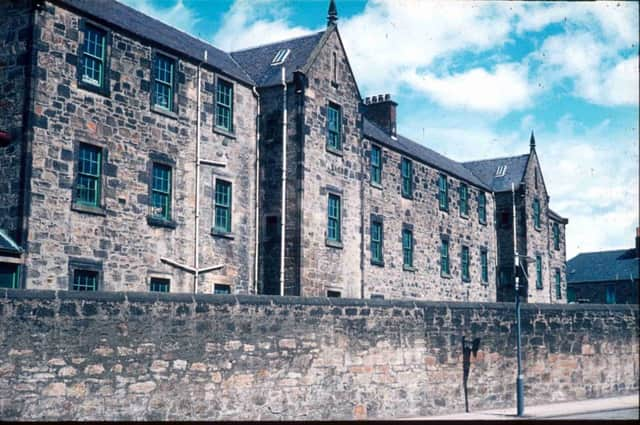Grim Victorian institution which served until 1980s


The building survived until the 1980s but by then its original purpose was served in a different and more sympathetic way.
Up until 1845 the relief of poverty was the responsibility of the churches but industrialisation brought a rapid rise in population and the voluntary efforts of the parish could not cope.
Advertisement
Hide AdAdvertisement
Hide AdIn that year Parochial Boards were established with responsibility for the relief of poverty.
The new Falkirk board appointed John Beeby, surely one of the town’s greatest ever servants, to the post of inspector of poor and clerk to the board. He was responsible for many changes including the opening of the new cemetery in Camelon. The fever hospital in Lochgreen Road was another of his schemes which aimed to tackle the cholera and typhoid outbreaks which were responsible for many deaths in the overcrowded houses of the Back Row, Wooer Street and the Garrison.
Turning to the problem of poverty, Beeby calculated that the town would need to raise £1400 each year to assist the poorest in the town and four years later that figure was almost three times higher. The outcome was a decision to build a poorhouse which would reduce expensive ‘‘outdoor relief’’ as it was called to manageable proportions. Land was obtained in the Cow Wynd and the new building was opened in January 1850. Soon afterwards, a section for ‘‘lunatic paupers’’ was added. Although it was similar in style and function to the great English work houses of the time, the Scottish poorhouses did not require the residents to work. However they were poorly staffed with little medical care and inspection reports of the Falkirk institution bear this out. There was accommodation for 200 ‘‘paupers’’ and a separate building with 32 places for those deemed to be mentally disturbed.
Males and females were strictly separated and the buildings were described as very noisy and ‘‘cheerless and gloomy”. A detailed report from 1855 notes that “the lavatory has only one leaden trough or basin for all the patients. There is no regular time for using the warm bath; the shower bath is occasionally used as a punishment, and also medically, to quiet excited patients. Leather muffs for the hands are in habitual use, and the strait-waistcoat is also occasionally applied.”
Advertisement
Hide AdAdvertisement
Hide AdAt this time there was a small stream called the Adam’s Gote which ran along what is now Hodge Street towards the old infirmary in Gartcows. The influential folk in the Woodlands area complained to the authorities that the ‘‘nuisances’’ discharged from the Poorhouse which “floated along the burn” might infect the local children with madness if they got too close to them. Incredibly, this notion persuaded the powers-that-be to close the building in 1900 and move the inmates to a new, far away place which eventually became Blinkbonny Home and later still Windsor Hospital.
Thereafter the old place was used for a variety of purposes including a base for Polish soldiers during the war and Woodside Home, a working men’s hostel. From 1954 to 1962 it was the County Trade School where the apprentice brickies, plasterers, joiners and plumbers were trained. When I went to work in Falkirk College in the 1970s some of my colleagues had started their teaching careers in the Trade School. I asked one: “Did you know that building used to be a lunatic asylum”. He replied, “Well it certainly was during my time”.